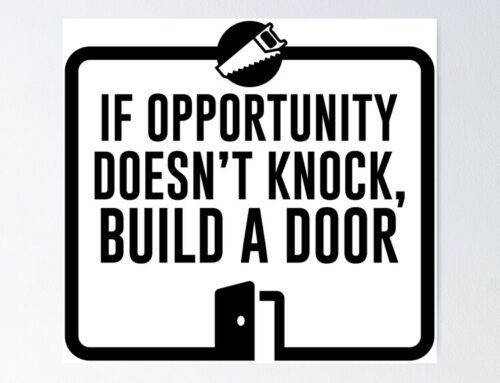In college, there are three kinds of classes.
First, there’s the blow-off classes, where 80 percent of your grade comes from fill-in-the-blank worksheets. To pass, all you really have to do is show up.
Then, there are the classes taught by “real hardasses.” These classes kept you up well past midnight, flipping frenetically through flashcards, chugging coffee and energy drinks.
Though one class is incredibly easy, and the other is mind-numbingly difficult, they are actually two sides of the same coin. They both rely on worksheets, textbooks, lectures, essay questions, and culminate in the undergraduate cycle of doom: cram, regurgitate, forget, repeat.
The third kind of class, however, sidesteps the whole messy system.
I was lucky to have a few classes like that, but one stands out in particular: Honors Shakespeare. The professor was intelligent, and very well-read. Beyond her academic credentials, though, she was an inspiring teacher.
In her classroom, I never felt lectured to, or really even “taught.” But her teaching left me passionate, fired-up, and with a new appreciation for the classic plays and the world they came from.
Instead of forcing the information down our throats, or spoon-feeding it to us, this professor handed us the utensils and let us eat for ourselves.
The difference between “easy” and “engaging”
Many writers fear becoming the “hardass” professor. I know I do. We want our writing to be digestible, not abstruse.
But, in purging our content of any whiff of pedantry, many of us fall too hard on the other side of the spectrum.
We confuse “easy to read” with “easy ideas,” and instead of prompting a stimulating, engaging discussion, our words fall flat … and fall out of our readers’ heads as quickly as Statistics 101.
In marketing, there’s an idea that you shouldn’t make your potential customers work for anything. And that’s true in many ways. Your website should be fast, secure, and intuitive.
The mistake is believing that you shouldn’t make any of your potential customers work for anything … ever. Sometimes, people need to be challenged. In fact, sometimes people like being challenged.
Helping your readers “flow”
Psychologist Mihaly Csikszentmihalyi knows this; it’s the foundation of his revolutionary 1990 book, Flow.
You’ve likely heard of “flow.” It’s the state of deep concentration we feel when we are engaged in a purposeful and enjoyable task.
Rock climbers feel flow when they climb a challenging peak, chess masters feel flow when they play a worthy opponent, motorcyclists feel flow when they’re following the lines on a graceful curve.
You know who else feels flow? Readers.
Csikszentmihalyi even cites it as a quintessential example of a flow activity.
“… one of the most frequently mentioned enjoyable activities the world over is reading. Reading is [a flow] activity because it requires the concentration of attention and has a goal, and to do it one must know the rules of written language.”
According to Csikszentmihalyi, in order for an activity to be enjoyable (and therefore a source of flow):
- It has to have rules or require skills that must be learned.
- It must provide clear goals and feedback.
- We have to be able to control the outcome.
In short, flow activities have to be challenging — but they can’t just be any kind of challenging.
To achieve flow, the challenge has to be appropriate for the participant’s skills. If the activity is not challenging enough, we get bored. If the activity is too challenging, we grow frustrated. Either way, the result is disinterest.
Of course, you can write content that is pleasurable but not challenging. However, Csikszentmihalyi makes in important distinction between pleasure and enjoyment:
“… we can experience pleasure without any investment of psychic energy, whereas enjoyment happens only as a result of unusual investments of attention.”
Pleasure is fleeting: We don’t have to be engaged to find something amusing or entertaining. But to have a truly enjoyable experience, we have to be invested. To be invested, we must first be challenged.
When these stars align — when we find an appropriate challenge and become invested — magic happens. We see things differently, we learn something new about ourselves, we find the world around us transformed.
“Overcoming a challenge inevitably leaves a person feeling more capable, more skilled,” Csikszentmihalyi writes. “After an enjoyable experience we know that we have changed, that our self has grown.”
My Shakespeare professor knew how to engage her students — how to gauge their skill level and provide appropriate challenges. And she knew that if she did it well, we would leave her class transformed.
Not all challenges are created equal
So, how do you write in ways that engage your readers and leave them transformed?
First, creating appropriate challenges doesn’t mean pulling out a thesaurus. Your challenges have to be relevant and what Csikszentmihalyi calls “nontrivial.”
That’s why you want to avoid a complicated checkout process or website that isn’t mobile-optimized. In those situations, the challenges you’ve created for your potential customers are completely irrelevant to their goals. User-experience issues are so frustrating because they’re outside the realm of the intended goal and will actually hinder a flow experience rather than create it.
In the same vein, poor grammar and opaque language can be viewed as the “UX issues” of reading, and will have the same effect on flow.
If you fill your content with trivial information — essentially making it harder to follow your point — readers will also grow frustrated and give up.
An engaging writer cuts trivial information ruthlessly, so that every sentence contributes to the value of the whole piece of content.
Finding the “appropriate” challenges
Creating nontrivial challenges is only half the battle. To ensure your readers will find your content engaging, you have to make sure the challenges you present are well-suited to their skill level.
One way to achieve that is to become a master content marketing strategist, just like my Shakespeare professor was a master educator.
A thorough understanding and deep empathy for your intended audience will allow you to gauge exactly what you should say to spark their interest.
Here’s a secret: sometimes, the best way to write engaging, challenging material is to write while you’re still learning.
I know it sounds counter-intuitive, but when you’re still learning you’re more sensitive to what’s interesting and would appeal to other learners. And, your passion can bring out the best in your writing.
I’m not saying you need to be a true beginner without any knowledge of your topic.
But if you keep a beginner’s mind, you’re much more likely to strike the perfect balance, and find those appropriate challenges that will capture your readers’ imaginations.
The ultimate challenge
I want to leave you with one last thing to think about as you embark on your new journey to write more challenging content.
According to Csikszentmihalyi, to describe something as “autotelic” means it is “a self-contained activity, one that is done not with the expectation of some future benefit, but simply because the doing itself is the reward.”
You probably have goals for your content: you want it to persuade, to inform, to spread awareness, to sell.
If your writing is rewarding for readers, you’ll be on your way to achieving your other content marketing goals.
ARTICLE BY: Loryn Thompson

206-391-5682
i2i@i2idirectmarketing.com
www.i2idirectmarketing.com
“…all deliveries GPS tracked…”




